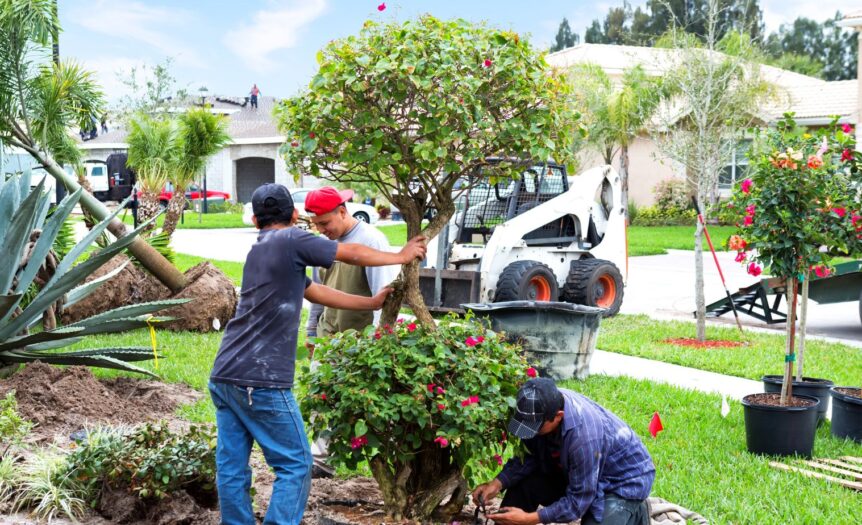Picking the right plants for your climate is incredibly significant for any gardener who desires to have a healthy and successful garden without having to invest excessive time in its maintenance. Be it temperature fluctuations, the quantity of rain during the entire season, or even soil conditions, each different climate offers different difficulties. By choosing plants that are appropriate for your particular region, you can have a gorgeous landscape all year without continually nurturing and watering it. Here’s how to choose the right plants based on your climate and the particular environmental conditions of your area.
Understanding Your Hardiness Zone
Before selecting any plants, you need to understand your hardiness zone. One of the most useful tools in selecting species is the USDA Plant Hardiness Zone Map, an invaluable tool that separates the country into zones that describe the average annual extreme minimum temperature. Plants are rated for a hardiness zone- the zone that they will survive outside in with no protection. It is, therefore, crucial to choose only those species whose hardiness zone matches the minimum temperature experienced by your location. Planting species outside of their recommended growing zone can be detrimental to one’s efforts as weather extremes might cause loss, thus being a waste of time and resources. Research the hardiness zone for your location to make appropriate choices about what will thrive in your garden.
Consider Rainfall and Watering Needs
Another important factor to consider when choosing the right plants for the landscape is water availability. Some areas of the world have heavy rainfall, while others are filled with frequent droughts. It is crucial to match your plant choices to the normal patterns of rainfall for your area.

For example, plants such as succulents and native grasses, which thrive in dry conditions, will flourish in arid locations and will have minimal water requirements. Conversely, plants requiring high levels of moisture, such as ferns and hostas, would do well in areas receiving significant rainfall. Knowing the natural water supply in your location would reduce supplemental irrigation and save water. Working with tree services in your local area can help ensure that trees and larger plants are properly maintained, allowing them to thrive in the given climate while supporting a balanced landscape.
Soil Conditions Check
Soil plays a big role in the health of a plant, and most climates have particular soils associated with them. Some plants prefer the acidity of sandy soils, while others prefer rich, loamy earth. Take a soil test to determine your soil pH, what nutrients your soil contains, and what type of soil you have to help you choose plants compatible with your natural soil conditions. Some species can also handle poor soil quality, which, in return, will improve the soil composition with time. Planting legumes and clovers enriches the soil with nitrogen, thus making them a good plant to be planted on lands that have low fertility.
Consider Sun Exposure
Sun exposure can make or break a plant. Some species prosper in full sun, while others prefer partial shading or even in a full shade. Check the sun exposure different parts of your garden receive over the course of a day. In full sun, use plants like lavender, rosemary, and daylilies. If there is an area that is shaded, then plants such as ferns, hostas, and impatiens do not need direct sunlight. This will help ensure the plants remain far healthier while discouraging those plants from receiving too much sunlight and withering away.
Incorporating Native Plants
One of the best things you can do to ensure that your plants will flourish in your climate is to choose plants native to your area. These plants have adapted to the exact conditions of your region, from temperature to soil conditions to rainfall.

These plants require lesser care, are much less susceptible to pests and diseases, and, in many ways, are more resistant to lack of water than non-native ones. Including native plants in your yard will add to the local wildlife by offering nutrition and shelter to pollinators, birds, and other animals. Because native plant options rely on where you stay, you will have to do a little research to find out which plants are native to your area.
Tools to Help Keep Your Landscape Handy
When you’ve picked out the perfect plants to thrive in your area, keeping your landscape requires a number of special tools and equipment. A compact tractor can be such an enormous help if you have a much larger property; with a compact tractor, you will be able to do several things easily, such as moving soil, digging, and tilling large garden beds. Compact tractors are versatile, efficient, and very affordable for all the work they do-which makes it a great deal for property owners who mean business regarding their outdoors. Smaller tools like pruners, rakes, and shovels will be required for the follow-up care of the plants. Appropriate equipment will make the job easier in keeping the garden healthy and in good growth.
Choosing plants that are right for your climate will make all the difference in giving you a low-maintenance, very vibrant garden. If you understand your hardiness zone, assess the rainfall and soil condition, take sunlight exposure into consideration, and include native species, then your landscape will thrive throughout the year. You’ll enjoy beautiful gardens that will complement your home with minimal time and effort to maintain them, with just the right tools and proper planning.








